In modern cloud-native systems, subtle error patterns hidden in log data can silently erode reliability—eventually leading to major outages. At LitenAI, we’ve built an intelligent Root Cause Agent that automates the analysis of such issues using natural language prompts, structured data reasoning, and contextual understanding. Powered by our MCP framework, the agent can integrate with tools like Jira, automatically triggering investigations as incidents are logged—analyzing the issue in real time, identifying the root cause, and suggesting or executing resolutions.
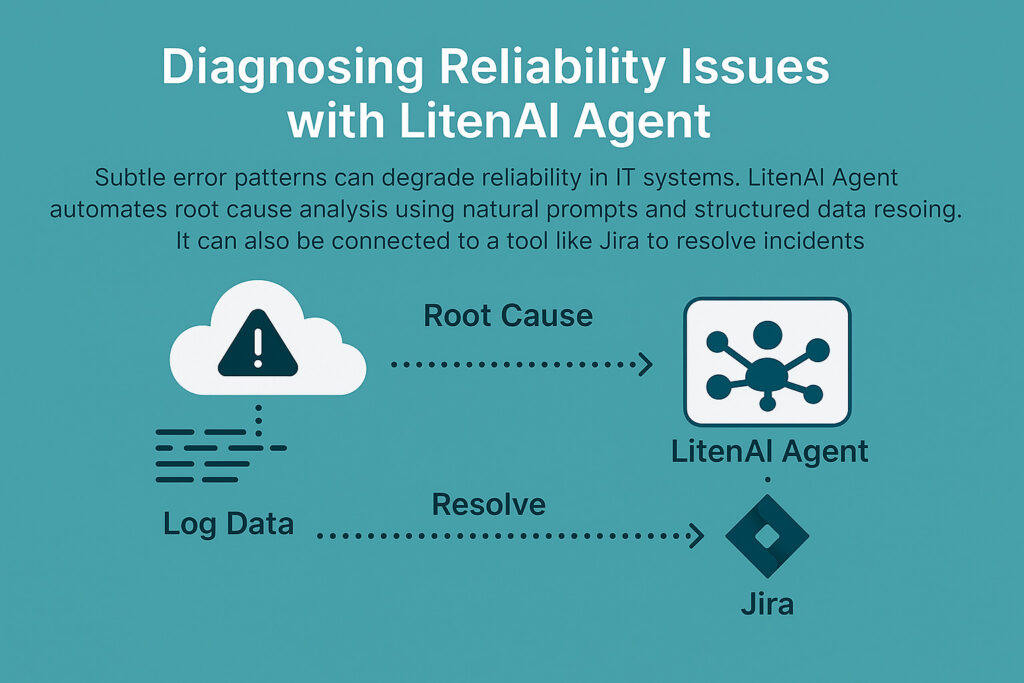
In this post, we demonstrate how the Root Cause Agent diagnoses a recurring service failure by analyzing status code data from system logs.
The Incident
The analysis can be triggered either by a user prompt or automatically when a new incident is logged. In this example, the issue was manually submitted by a user:
I have seen a bunch of errors in imapserverlog. This is causing the service to fail once in a while with server error messages. Could you root cause?
The agent responds like this –

You can modify the root cause prompt till it captures the whole issue.
Previously 4xx and 5xx type of errors have been seen. Please include them. Look for other errors as well.
Once the user confirms the prompt, the agent proceeds with the root cause analysis.
Yes, this looks good.
The prompt generation can look like this.
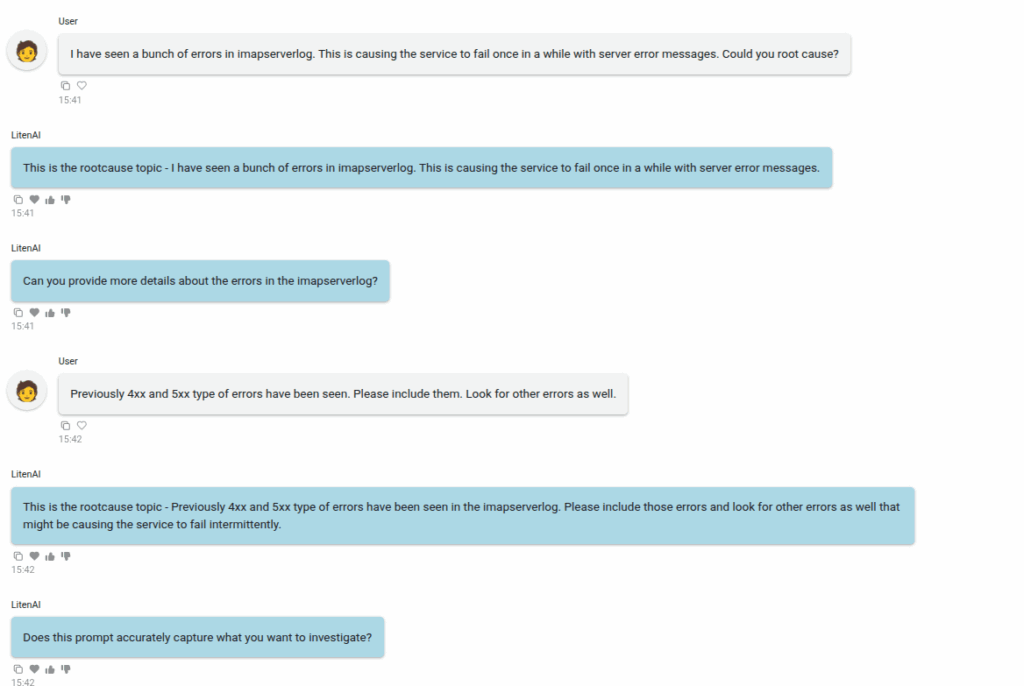
One the research prompt is completed, LitenAI will start the research.
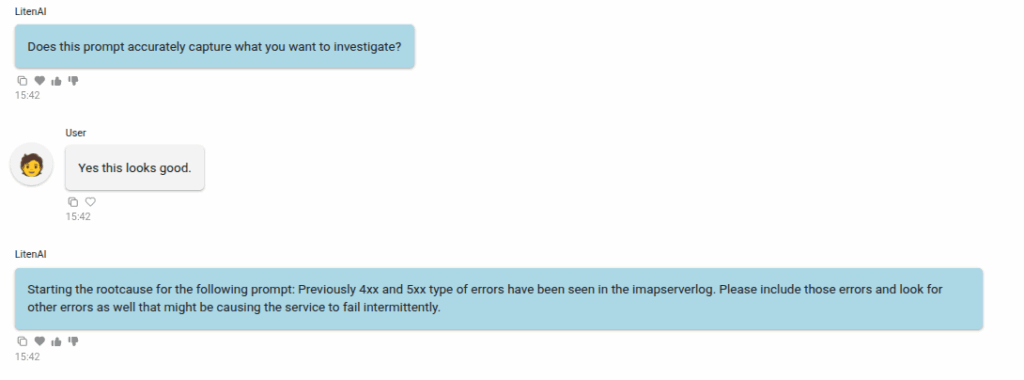
Root Cause Workflow
The LitenAI Root Cause Agent autonomously determines the optimal workflow to investigate incidents. It intelligently selects and sequences tools such as log search, structured analysis, causal reasoning, and ranking algorithms to pinpoint the most likely root cause.
The agent executes the following steps:
Parse the incident context
The agent begins by processing either a user prompt or an automated trigger, identifying the relevant scope—such as log sources, error categories, and the timeframe.
Retrieve relevant data
It then generates a relevant query to extract error and other log data.
Analyze and reason
It evaluates the impact and frequency of each error, correlating them with system behavior and historical incident patterns to identify potential root causes.
Rank potential causes
It uses domain knowledge and a tuned LitenAI model to identify the most probable root cause based on the available evidence.
Compiled a structured report
It summarizes the findings, including error distributions, root causes, and recommended remediation steps.
LitenAI Root Cause Outputs
In this case it first gets the relevant data using SQL query.
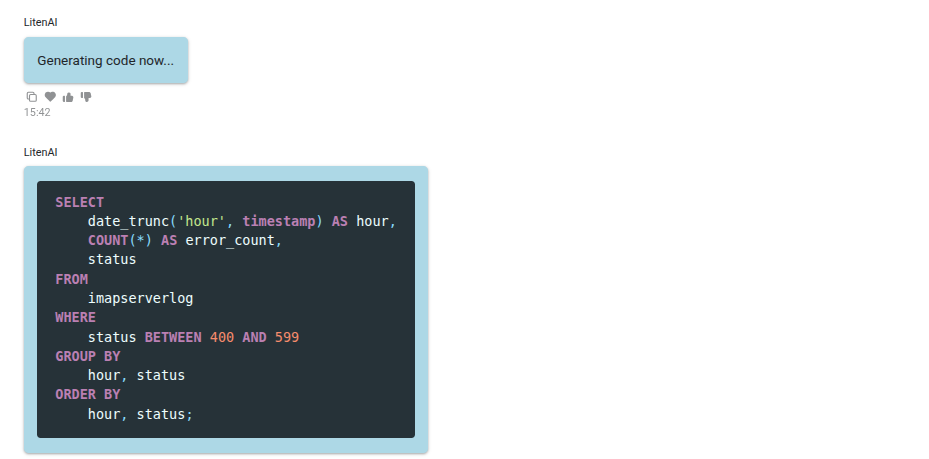
Then it gets the data and performs multiple analysis and reasoning steps.
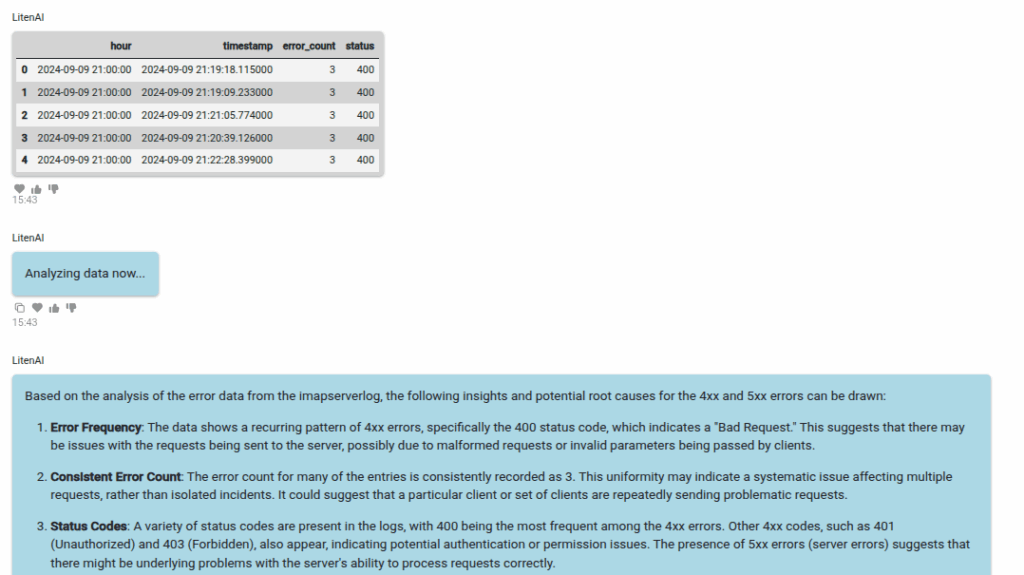
After a few minutes of analysis, the agent produces a report outlining potential causes. In this case, the IMAP service is experiencing a high volume of internal server errors, which require remediation. A follow-up root cause session can be initiated to explore resolution strategies. One possible mitigation is to roll back the recent changes.

How LitenAI Root Cause Agent Helps
Unlike manual debugging workflows, LitenAI Root Cause Agent automatically:
- Connects to structured logs (SQL, data lakes, or APIs)
- Identifies patterns across multiple error classes
- Synthesizes explanations grounded in system context
- Presents insights with recommended next actions
All through a natural, conversational interface—empowering SREs and developers to jump straight to solutions.
Drill down on the root cause
LitenAI also offers agents like Data Explorer and Reasoning, which allow users to drill down into the data with full context from the incident. These tools can be used to further investigate and understand the underlying issue.
🧪 Try It Yourself
You can drop prompts like –
Investigate status code spikes in service logs from last month, and explain the root causes.
…and LitenAI agents will do the rest.
